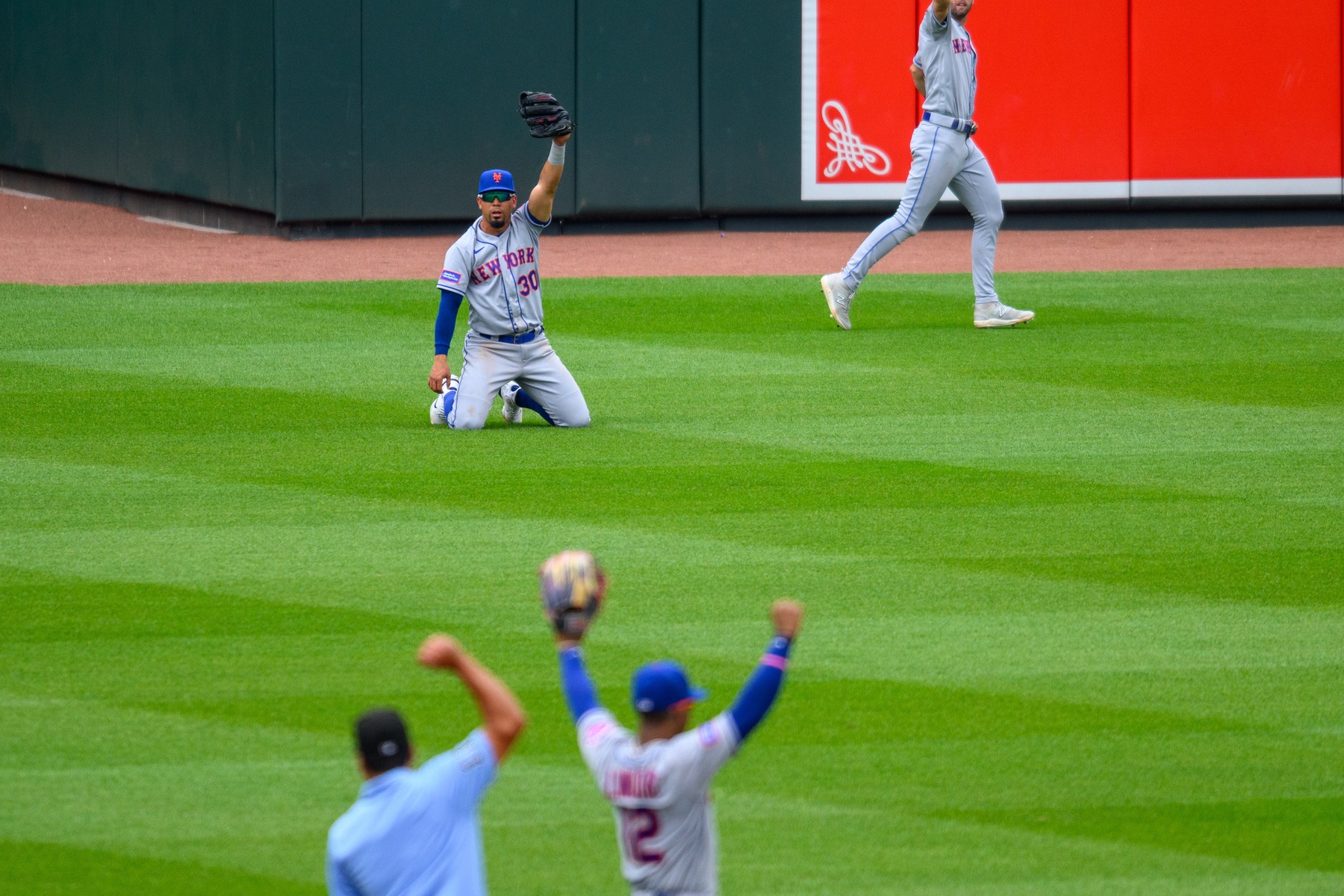The 2023 season unofficially ended for the New York Mets at 6 p.m. EST. on Tuesday. Two hours after the trade deadline, New York played the first game of a six-game road trip. Unsurprisingly, the team looked as if trading away key players in less than a week took its toll. The Mets lost all six games of the trip and did not look good in the process. While it’s not surprising that the depleted bullpen struggled, it was disappointing to see the offense look as dead as it did.
[metabet_core_side_odds_tile query=”bbm/new_york_mets” size=”350×300″ site_id=”lastwordonsports”]
No matter how you look at it, this was an awful week for the 2023 Mets. However, the final two months offer a chance for players to step up and take advantage of opportunities. There are some positive takeaways from an awful Mets week despite the team losing all six games of the road trip.
Positive Takeaways From An Awful Mets Week
1. Jeff McNeil
Jeff McNeil did not look like his vintage self this week. In the six games, the lefty was six for 24 with no walks. That’s not good for his standards.
However, he had some good games, including two multi-hit games, and appeared to make a big adjustment on Saturday night in Baltimore. Pitchers have pounded McNeil inside all season and the 31-year-old has not been able to successfully adapt. So, it was great to see him turn on an inside pitch from Kyle Gibson for a game-tying two-run homer.
Jeff McNeil – New York Mets (4) pic.twitter.com/ZEnqEufgIk
— MLB HR Videos (@MLBHRVideos) August 6, 2023
These were two of McNeil’s three RBI on the night. While hitting home runs is not part of his game, it was a great sign that McNeil was able to handle that inside pitch. Pitchers have bullied him inside all year and perhaps he’s finally made a successful adjustment. If this is the case, McNeil might be able to have a rebound over the final two months and end the season on a positive note.
2. David Peterson
David Peterson’s struggles are one reason why the Mets underperformed this season. He was supposed to be crucial depth for an older rotation but struggled when put into action. The Mets did not have anywhere to turn to cover a rotation dealing with injuries and Peterson’s struggles.
The Mets have used Peterson mostly in the bullpen since bringing him back up from Triple-A in mid-June. He pitched well thanks to a more aggressive approach. By trading away Max Scherzer and Justin Verlander, the Mets opened up two spots in the rotation in August and September.
With a new opportunity, Peterson impressed against the Baltimore Orioles on Friday. The 27-year-old tossed three scoreless innings while giving up one hit, three walks, and one strikeout.
In his first start after a bullpen stint, the Mets limited Peterson to around 50 pitches. Sloppy New York defense cost Peterson an inning-ending double play in the first. He did a nice job pitching out of that trouble, but the miscue likely cost him one more inning and an even more impressive stat sheet.
"We've got to finish strong. I think it's a big opportunity to show the front office what we have going into the offseason. It gives them the opportunity to make some moves and go to next year strong"
– David Peterson pic.twitter.com/qgSP6KR1Kh
— SNY (@SNYtv) August 5, 2023
Through his postgame comments, Peterson clearly knows how important these starts are for him and the team. It’s a positive takeaway for the Mets that Peterson infused lessons learned from his bullpen stint into his starts. Specifically, he attacked hitters more aggressively than he did in April and May. He relied mostly on his fastball and sinker (he got three whiffs on his sinker) while mixing in his slider and changeup. He had good stuff and used it to get ahead in counts, especially after the first inning. Peterson and the Mets need to continue seeing signs of growth and improvement from the former first-round pick.
3. Tylor Megill’s Fastball
Tylor Megill struggled in his first start Major League start since June. He allowed five runs on nine hits in just 4 2/3 innings. On the bright side, he struck out three, walked none, and had good life on his fastball.
One reason for Megill’s struggles this season is the regression of his best pitch from 2022, his fastball. The Mets sent him down after a poor start in Houston to specifically work on the shape of his fastball and his delivery. The pitch lacked the vertical drop that made it so effective last season.
"I know that some people may not look at it that way, but I thought it was a good step for him stuff-wise. They did a nice job with him down in Syracuse. He looked more like himself and it's got a chance to progress better as we go."
– Buck Showalter on Tylor Megill's return pic.twitter.com/XoLPYzeWKf
— SNY (@SNYtv) August 6, 2023
In 102 pitches, Megill threw 62 fastballs. He averaged 95.8 MPH and maxed out at 98.8 MPH. Velocity isn’t the end all be all for Megill, and it’s possible that this was a bad matchup against a good team that hits fastballs well.
“I don’t think it was terrible,” Megill said when asked about his outing. “Just something to build off of to the next one.”
He’s right in that this was a performance worth building off of. Saturday was not a good outing for him, but there were legitimate signs that might lead to positive takeaways for the Mets. He’ll likely have the opportunity to start every five days down the stretch. He needs to continue improving his fastball and mechanics and prove he belongs on next year’s Major League roster.
Conclusion
It will be interesting to see just how bad the Mets play in the final two months. Will a depleted pitching staff and thinned bench lead to a collapse? Or can the existing core of established quality veteran bats lead the team to a respectable finish? 14 runs in six games is unacceptable for this lineup.
However they perform, the roster will be filled with opportunities. No player stepped up to help the Mets salvage their season in the first four months, but maybe some come forward to claim a role on the 2024 team.
Main photo credits:
Reggie Hildred-USA TODAY Sports
Players mentioned:
Jeff McNeil, Kyle Gibson, David Peterson, Max Scherzer, Justin Verlander, Tylor Megill






